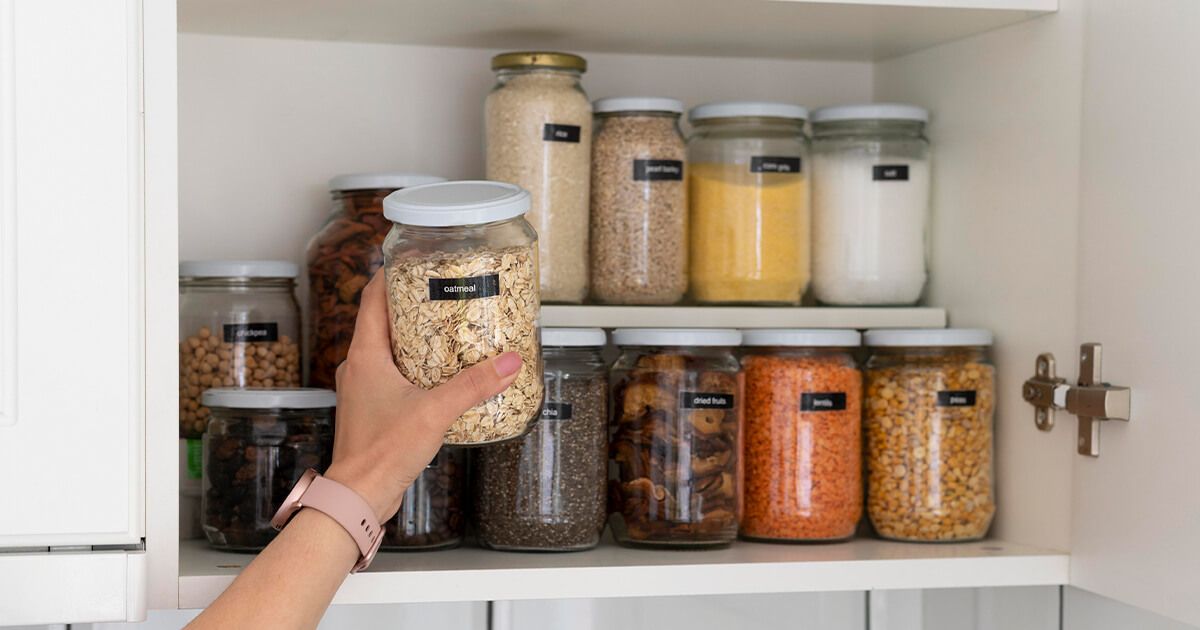Blog
Seasonal Allergies: Managing & Preventing Symptoms

Everyone looks forward to the spring. There’s the promise of flowers blooming and blossoming trees, sunnier days, and warmer temperatures.
However, for millions of people plagued by allergies, it also means that symptoms like sneezing, congestion, and other discomforts are on the horizon.
According to the Canadian Society of Allergy and Clinical Immunology, about one-quarter of Canadians suffer from seasonal allergies. These include common symptoms like sneezing, itchy nose and throat, nasal congestion, a runny rose, and coughing, as well as watery, itchy, and reddened eyes.
Rather than simply leaving yourself to a sniffly fate, you can tackle the symptoms and improve your quality of life. In this article, we’re going to explore straightforward strategies to help manage your seasonal allergies effectively.
Reduce Exposure to Allergy Triggers
There are several things you can do to help minimize the exposure to allergens while also alleviating symptoms. Here are some of our top tips for keeping your symptoms at bay:
Staying indoors during dry, windy days, instead opting to go outside after the rainfall clears up pollen from the air.
Avoiding activities such as mowing the lawn and weed-pulling that can pull up allergens.
When coming indoors, make sure to remove your outdoor clothes and shower to wash away pollen from your skin and hair.
Try to avoid hanging your laundry outside because pollen has a tendency to cling onto fabrics.
Consider wearing a face mask during outdoor chores.
While these tips can’t completely prevent allergies, they can help manage symptoms and ease your general springtime sniffling and itchiness.
Take Precautions During High Pollen Counts
As annoying as it might be to have to take pre-emptive measures to avoid allergies, it can be greatly beneficial to take additional steps to stop symptoms before they start.
Here are some essential tips to get yourself started to alleviate your allergies:
Make sure you’re monitoring pollen forecasts (as mentioned) through local news media and other online resources.
Pre-emptively take medication as needed to stop symptoms before they start.
Monitor pollen forecasts through local media such as the news or other online sources.
Close doors and windows during peak pollen times, particularly at night.
Minimize outdoor activities, especially in the early morning when pollen levels tend to be highest.
Keep the Air Indoors Clean
It can be hard to eliminate allergens indoors, but making an effort can do a lot to help you mitigate and manage symptoms.
It does take some additional work, but if you follow these tips, you should be able to help ease your allergy woes:
Use the air conditioning in your home and car.
If you have central air, use high-efficiency filters and make sure you keep up with regular maintenance measures.
Keep indoor humidity levels in tandem with a dehumidifier.
Utilize a portable HEPA filter – especially in your bedroom. There’s no sense in suffering while you sleep.
Make sure to vacuum your floors using a HEPA-filtered vacuum cleaner.
Try Over-the-counter Remedies
Cook’s Pharmacy has everything you need to help manage your allergy symptoms, so it only makes sense we recommend using some over-the-counter remedies! However, it’s important to keep in mind that you always consult with a healthcare provider before you begin starting new medications, especially if you take other prescriptions. Recommendations are not a replacement for medical advice.
Having said that, here are some over-the-counter medicines you can consider using:
Try oral antihistamines like cetirizine, fexofenadine, and loratadine to target sneezing, itching, and nasal congestion.
Try corticosteroid nasal sprays such as fluticasone and budesonide to address nasal symptoms.
Try cromolyn sodium nasal spray to mitigate springtime allergy symptoms by blocking immune system agents.
Try oral decongestants like pseudoephedrine to provide temporary relief from nasal congestion.
Sinus Rinsing – a Different Approach to Decongestion
Sinus rinsing, also referred to as nasal irrigation or nasal flushing, is a process used to clear the nasal passages of mucus, allergens, and irritants. The process involves flushing out your nasal cavities with a saline/saltwater solution to help clear out congestion, reduce inflammation, and improve your overall breathing. Here's how the process typically goes:
Preparation
Pharmacies often have saline solution kits available for purchase, but in case you can't find it, you can mix your saline solution by mixing purified or distilled water with salt and baking soda. You must use clean water to avoid possibly introducing bacteria or other contaminants into your nasal passages.
Application
Typically, you pour the saline solution directly into your nostrils from a container or administer it using a nasal irrigation device like a neti pot or bulb syringe. You tilt your head to the side over the sink and gently pour the solution into one nostril while breathing through the mouth (avoid swallowing while doing this).
Rinsing
After you apply the saline solution, it's important for you to blow your nose gently to expel any remaining solution, mucus, and loosened debris from your nose. Consider Alternative Treatments
Sinus rinsing can be beneficial for various conditions, such as:
Sinusitis
Sinus rinsing can clear blocked-up sinuses and reduce inflammation that comes with sinus infections.
Allergies
Sinus rinsing can flush out several allergens, such as pollen, dust, and pet dander, which can relieve allergy symptoms such as congestion and irritation.
Rhinitis
Sinus rinsing can alleviate symptoms of both allergic/non-allergic rhinitis (inflammation and swelling of the mucous membrane of the nose) by removing irritants from the nasal passage.
Nasal Congestion
Sinus rinsing can provide temporary relief from nasal congestion caused by colds, flu, or other respiratory infections.
Typical Causes of Springtime Allergies
Allergies typically occur when an individual's immune system deems certain proteins known as allergens as germs or foreign bodies. Having said that, developing an allergy and then experiencing an allergy attack is a two-step process. The first is when the body experiences the allergy for the first time and creates the antibodies that attach to specific cells.
This process is often referred to as "sensitization", which is the priming process for an allergy attack to follow upon encountering the allergen again. This causes the cells to release histamines, a substance that causes the typical unpleasant symptoms associated with allergies. Subsequently, the medicine designed to counteract these symptoms are referred to as “antihistamines” - AKA, allergy medication.
Everyone experiences allergies differently, but there are common causes of spring allergies - such as grass and tree pollen and mold spores.
Let’s break down these common allergens:

Pollen
Pollen plays a big role when it comes to fertilizing several different plant species and is an important part of how ecosystems function. However, it can be the bane of allergy sufferers. While larger, waxy pollen usually found on colourful flowers and spread by bees typically doesn’t trigger much in terms of allergies, the smaller, powdery pollen from trees, grass, and weeds can easily become airborne and impact those with significant allergies.
Although it’s typically trees that contribute to springtime allergies, weeds, and grasses can also cause symptoms, especially in places where spring has arrived early. Grass pollens, such as rye and Bermuda grasses, typically hit their peak in May and June.
Mold
While less obvious than pollen, mold can also trigger springtime allergy symptoms during the springtime season. Mold and mildew tend to release spores to reproduce, which can be dispersed through the air, especially during windy and dry conditions. As well, high humidity, dew, or even fog can help mold spread. These spores can cause symptoms in allergy sufferers, especially if weather conditions continue to facilitate their spread.
When in Doubt, Consult a Healthcare Provider
If you find that any of your efforts aren’t improving your springtime allergies, it’s time to talk to your healthcare provider if you haven’t already. Typically, it’s advisable to consult a healthcare provider, such as your general practitioner, before starting or stopping any treatment or medications. If you find that your symptoms are severe, it is especially important that you visit your family doctor or consult a pharmacist before you start trying any treatments. Remember, online recommendations are not a replacement for medical advice.
However, we can at least prepare you on what to expect when you do make the decision to see a professional:
Allergy testing can be administered to pinpoint specific triggers and help elaborate on what treatment could be right for you.
Allergen immunotherapy such as allergy shots or sublingual tablets could potentially offer long-term relief in the case of severe allergies.
Adjustments made to medications, either switching to new treatments or adjusting prescriptions, could provide relief to allergy sufferers.
You don’t have to suffer silently from seasonal allergies. If you take the time to be proactive about your symptoms, you can get the most out of the springtime without having to sacrifice your quality of life.
The experts at Cook’s Pharmacy can be here to support you through your springtime allergy journey. See our website or pop in for a visit to help get your allergies under control.
Spring Cleaning Your Diet: 10 Tips to Freshen Up Your Eating Habits

The start of a new season is a great time to reimagine old habits. Many Canadians don’t follow diets that aim for optimal health. Luckily, changing those patterns is as easy as some springtime dusting.
The world we live in is fast-paced, and many of us find ourselves too busy to worry too much about the food we consume. In an ever-evolving world with plenty of modern conveniences, it’s easy to fall into habits that don’t best serve your overall health.
In this post, you’ll find 10 tips to help you spring clean your diet as we walk into warmer, sunnier days. We’ll also explore a bit of the science behind eating behaviours and physical health.
Eating healthy isn’t just about achieving an aesthetic goal. It’s about creating a foundation for good health in your future.
A review has shown that diets comprised primarily of whole foods – specifically ones containing whole grains, vegetables, fruit, fermented dairy, fish, olive, nuts, etc. – are associated with a lower risk of several preventable diseases.
As always, our team at Cook’s RX is here to help you in your health journey. You do not have to navigate this part of your life alone. If you’re still unsure about how to refresh your diet or anything else related to healthy living, reach out to us and we will help you out.
Why is Healthy Eating such a Hot Topic?
Simply put: The majority of Canadians don’t eat the recommended daily minimum of five servings of vegetables and fruit, which highlights a wee issue in our society’s eating habits.
According to Canada’s Food Guide, a healthy eating pattern is defined by two central messages: eating a diet that is rich in plant foods (fruit, vegetables, grains, nuts, seeds, beans, soy, etc.) and maintaining a diet that limits processed foods.
Why Should We Be Concerned About Having a Balanced Diet?
Eating healthy is highly associated with not only better health overall, but better mental well-being too. Having a healthy, balanced diet not only reduces the risk of multiple preventable diseases, it also reduces the risk of anxiety and depression.
Outside of just the obvious benefits, it also feels good to fuel your body well, boasting better energy levels and even clearer skin.
All of this sounds great, but how do you actually get started? So-called “junk foods” are often cheap and very accessible. They’re also a big part of our food culture. Well, luckily, we have ten tips to help you get started on your healthy eating journey:
1) Limit Certain Foods
Alcohol: While it’s OK to have the occasional drink, drinking in excess is hard on your liver – the organ that literally detoxes your body. Not to mention, alcohol is a diuretic, so it makes it more difficult to stay hydrated. Keeping your alcohol consumption to a minimum is ideal. If you find yourself missing your favourite cocktail, try a bit of tonic water with some juice for a nice fizz.
Added Sugars: Sodas and prepackaged foods are often loaded with tons of added sugar, which can lead to a myriad of health issues down the line. Instead, opt for naturally sweet foods like fruit.
Salt: Many processed foods contain high volumes of sodium, which isn’t good for overall health. Limiting salt intake is essential to having a healthy diet.
Processed Foods: A lot of processed foods contain many additives like salts, sugars, and trans fats. Keeping your food choices focused on whole foods is a great way to avoid these additives and keep your nutrition high. Common processed foods include frozen TV dinners, fast food, chips and other snack foods, etc.

2) Organize Your Kitchen
Nothing snuffs out your desire to make a meal than a disorganized kitchen.
So, with the nice spring weather soon upon you, open up those windows, get some fresh air, and freshen up your space!
Studies show that having a neat and tidy space aids in productivity and reduces feelings of anxiousness. If you’re able to come home to an organized, tidy space, preparing meals will be much easier – especially on those busier days.
3) Make Meals at Home
Speaking of cooking meals – making the majority of your meals at home is great way to ensure you know what’s going into your body.
Having the occasional takeaway is fine, but it’s better to prepare meals at home made of wholesome ingredients.
This is particularly helpful for those with certain food restrictions. An added bonus is you can make it exactly how you like it.
4) Eat More Whole Foods
Whole foods are naturally healthy foods such as fruits, vegetables, lean proteins, legumes, nuts, seeds, and more. By including a variety of whole foods, you can ensure you’re getting a variety of nutrients that your body craves to function well.
5) Optimize Your Freezer
At the start of a new season, it’s good to go through and clean out your freezer.
Decide what’s good to stay and what needs to go. Fill it up with convenient, pre-cut vegetables and fruits, as well as nifty freezer meals for those hectic days.
Making sure you have healthy options makes you more likely to make good choices.
6) Drink More Water
It might sound like a topic that’s been addressed to death, but many Canadians don’t drink nearly enough water.
Hydration is essential for the optimal function of your body’s organs. After all, your body can go longer without food than water, which speaks to how essential it truly is.
If you’re not a huge water drinker, try drinking sparkling water or adding sprits of lemon/lime to your H2O2. Try to drink an ounce of water for every pound of body weight each day.

7) Get Your Portion Sizes in Check
Learning what a proper portion size is can be challenging, but it’s worth it to know how much of each food group you need on your plate.
Too often, we under or over-estimate the number of calories in our meals and are none the wiser to just how much we’re actually eating. You can always refer to visual guides or use a food scale for reference.
Here is a basic breakdown of portion sizing for the four main food groups:
Fruits and Vegetables:
Aim for 2 to 2.5 cups of fruits per day.
Consume 2.5 to 3 cups of vegetables per day.
Check out our post on how to incorporate more fruits and vegetables into your diet!
Grains:
Choose whole grains whenever possible.
Recommended portion sizes vary, but generally aim for 6 to 8 ounces of grains per day.
Protein:
Consume 5 to 6.5 ounces of protein per day.
Opt for lean protein sources like poultry, fish, beans, nuts, and seeds.
Dairy:
Include 3 cups of dairy or dairy alternatives per day.
Choose low-fat or fat-free options like milk, yogurt, or cheese.
8) Check Out Your Local Farmer’s Market (Optional)
If you have the option to get some nice, local produce from the farmers in your area, this can be a great addition to your springtime diet cleanup. This allows you not only to support local farmers, but it gives you access to some of the freshest, tastiest produce available.
Some particularly healthy vegetables to consider include kale, broccoli, peas, carrots, beets, and spinach. There’s bound to be something you and your family can enjoy!
You can also consider plenty of fruits and fresh herbs, as well as natural honey. Yummy!
9) Only Buy What You Know You Can Eat Within a Week
One of the biggest pitfalls of any new diet is going into it with a lot of enthusiasm. Enthusiasm itself isn’t bad, but you’re going to be disappointed if you spend a small fortune on healthy foods only for them to go bad.
It’s better to go in with a list of things you’re sure you can finish by the end of the week than to buy a stockpile of food to spoil. This not only saves food, money, and time, it’s going to save you a lot of discouragement.
You can even consider making a food plan for the week and prep some of your ingredients to make it easier when it comes to putting meals together.
10) If This All Feels Like Too Much – Start Small!
Guidelines are great suggestions to get a rocket start on your goals, but life is stressful. If you’re finding bigger, more drastic changes aren’t sustainable for you, try making smaller shifts in your eating behaviours. Try thinking of a smaller eating habit you want to change, such as:
Eating less processed sugars. Make an easy swap by including more tasty fruits and naturally sweetened products.
Eating slower and more mindfully. Turn off your devices and focus while you eat.
Eating breakfast in the morning. This can be as simple as adding a smoothie to your morning routine instead of skipping a meal.
Once these little changes become easy, approaching larger tasks will seem less daunting to you in the future. Just keep at it!
Springtime is a great time to be out with the old and in with the new, including making positive changes to your diet. Remember, you don’t have to make drastic changes right away; small, meaningful adjustments can make all the difference.
If you feel at all lost or require additional guidance, don’t hesitate to speak to a medical professional. If you’re still unsure about how to refresh your diet or anything else related to healthy living, reach out to us and we will help.
The Connection Between Nutrition and Immunity

Did you know that what you eat can have a profound impact on your body's ability to fight off illnesses and infections?
Imagine having the power to strengthen your immune system and shield your body from diseases, all through the choices you make at the dinner table.
The immune system is your body's natural defense mechanism against pathogens like viruses and bacteria, and it plays a critical role in keeping us healthy. Proper nutrition is a key factor in supporting and enhancing the immune system's function.
In this blog post, we will explore the intricate relationship between nutrition and immunity. We'll look into the essential nutrients that boost immune function, discuss immunity-boosting foods, reveal lifestyle factors that impact your body's defenses, and offer practical tips for optimizing your immune health.
As always, our team at Cook’s RX is here to help you in your health journey. You do not have to navigate this part of your life alone. If you’re still unsure about how to focus on your immunity, nutrition or anything else related to healthy living, reach out to us and we will help you out.
The Impact of Nutrition on Immunity
Nutrition helps support immune function by providing the essential vitamins, minerals, and antioxidants that help regulate and strengthen the body's defense mechanisms, enabling it to effectively combat infections and diseases.
Nutrient deficiencies can significantly weaken immunity, leaving the body vulnerable to illnesses. Inadequate intake of key nutrients like vitamin C, vitamin D, zinc, and others can compromise the immune system's ability to ward off threats, making it imperative to maintain a well-balanced diet for optimal immune health.
The Gut-Immunity Connection
The gut and the immune system are intricately connected, with approximately 70% of immune cells residing in the gut-associated lymphoid tissue (GALT). A healthy gut provides a barrier against harmful pathogens by maintaining the balance of beneficial and harmful bacteria in the digestive tract.
This balance, known as gut microbiota, is vital in training and modulating the immune system. It helps the immune system distinguish between harmless substances and potential threats.
When the gut is in good shape, it can effectively support the immune system in recognizing and responding to pathogens, ultimately contributing to a stronger immune response.
Probiotics are beneficial bacteria that can be consumed through foods like yogurt, kefir, and supplements. They help maintain a healthy gut microbiome by promoting the growth of beneficial microorganisms. Probiotics can enhance the gut's ability to regulate the immune system and reduce inflammation, which is essential for overall immune health.
Prebiotics are dietary fibers that serve as food for probiotics and beneficial gut bacteria. They can be found in foods like garlic, onions, asparagus, and bananas.
Key Nutrients for Immune Health
Understanding the key nutrients for immune health is very important in bolstering your body's defences. These essential vitamins, minerals, and antioxidants form the foundation of a robust immune system. Here are a few to keep in mind when planning out your meals.

Vitamins
Vitamin C: Known for its antioxidant properties, vitamin C helps stimulate the production of white blood cells and antibodies, enhancing the body's ability to fight infections.
Vitamin D: Essential for regulating immune cell function and reducing inflammation, vitamin D deficiency has been linked to increased susceptibility to respiratory infections.
Vitamin E: A powerful antioxidant that protects cell membranes, vitamin E supports immune cell function and helps maintain the integrity of the immune system.
Minerals
Zinc: Zinc is key to the development and function of immune cells. Zinc deficiency can impair the body's ability to combat infections effectively.
Selenium: As an antioxidant, selenium helps regulate immune responses and can enhance the body's defenses against certain viruses.
Antioxidants
Antioxidants, including vitamins C and E, as well as minerals like selenium, help neutralize harmful free radicals in the body, reducing oxidative stress and inflammation that can weaken the immune system. By scavenging free radicals, antioxidants support immune cells in their fight against pathogens, contributing to overall immune health.
Immunity-Boosting Foods
There is a vibrant world of culinary choices available as we explore immunity-boosting foods that not only tantalize your taste buds but also fortify your body's natural defenses against illnesses and infections.
Here are some foods rich in immune-boosting nutrients for you to keep in mind:
Citrus Fruits: Oranges, lemons, and grapefruits are packed with vitamin C, which stimulates the production of white blood cells and antibodies.
Berries: Blueberries, strawberries, and raspberries are rich in antioxidants that help reduce oxidative stress and support overall immune health.
Leafy Greens: Spinach, kale, and broccoli provide essential vitamins like A and C, along with minerals like zinc, that are crucial in immune function.
Garlic: Known for its immune-boosting properties, garlic contains allicin, a compound that can enhance the activity of immune cells.
Yogurt: Probiotic-rich foods like yogurt promote a healthy gut microbiome, which is closely linked to a strong immune system.
Nuts and Seeds: Almonds, sunflower seeds, and walnuts offer vitamin E and healthy fats that contribute to immune health.
Lean Protein: Chicken, turkey, and fish are sources of protein and amino acids necessary for immune cell production.
Ginger and Turmeric: These spices possess anti-inflammatory properties that can help modulate immune responses.
Lifestyle Factors and Immunity
Lifestyle factors have a profound impact on immunity. In this section, let’s look at the role that sleep, exercise, and stress management play in nurturing a resilient immune system.
Sleep: Adequate sleep is essential for the body to rest, repair, and recharge. The immune system becomes more active during deep sleep, producing cytokines and antibodies that help combat infections.
Exercise: Regular physical activity boosts circulation and helps immune cells move freely throughout the body. Exercise also reduces inflammation, enhancing the body's ability to respond to pathogens.
Stress Management: Chronic stress can weaken the immune system, making it less effective at fighting off infections. High stress levels can lead to the release of stress hormones like cortisol, which can suppress immune function.
Now that we understand the importance of these lifestyle factors, let’s aim to incorporate the following healthy habits into your lifestyle.
Prioritize Sleep: Aim for 7-9 hours of quality sleep per night. Create a bedtime routine, keep a consistent sleep schedule, and create a comfortable sleep environment.
Stay Active: Engage in regular physical activity, such as walking, jogging, or yoga, to promote circulation and immune cell activity. Aim for at least 150 minutes of moderate-intensity exercise per week.
Manage Stress: Practice stress-reduction techniques like mindfulness meditation, deep breathing exercises, or yoga. Allocate time for relaxation and self-care.
Maintain a Balanced Diet: Continue to emphasize the importance of a well-balanced diet rich in immune-boosting nutrients. Consume a variety of fruits, vegetables, lean proteins, and whole grains.
Stay Hydrated: Proper hydration is essential for overall health and can help support the immune system by facilitating the movement of nutrients and immune cells throughout the body.
Limit Alcohol and Smoking: Excessive alcohol consumption and smoking can weaken the immune system. Encourage moderation or quitting these habits if applicable.

Immunity-Boosting Supplements
Supplements can play a valuable role in supporting immune health by providing essential nutrients that may be lacking in one's diet. They can help bridge nutritional gaps, particularly when it's challenging to obtain sufficient nutrients from food alone, ensuring the body has the necessary building blocks for a robust immune response.
It's essential to exercise caution when using supplements, as excessive intake can sometimes be harmful. Individuals should consult with a healthcare professional or registered dietitian to determine their specific nutrient needs and choose supplements wisely to avoid potential interactions or side effects.
As always, our team at Cook’s RX is here to help you in your health journey. You do not have to navigate this part of your life alone. If you’re still unsure about how to focus on your immunity, nutrition or anything else related to healthy living, reach out to us and we will help you out.
Any medical or pharmaceutical information on this site is provided as an information resource only and is not to be used or relied on for any diagnostic or treatment purposes. This information does not create any patient-pharmacist relationship, and should not be used as a substitute for professional diagnosis and treatment.
Please consult your healthcare provider before making any healthcare decisions or for guidance about a specific medical condition.
Cook’s Pharmacy and its subsidiaries expressly disclaim responsibility and shall have no liability, for any damages, loss, injury, or liability whatsoever suffered as a result of your reliance on the information contained in this site.
Gut Health and Nutrition: Feeding Your Microbiome for Wellness

A new study from MDVIP and Ipsos finds two-thirds of adults experience recurrent digestive symptoms like gas, bloating and abdominal pain, but few seek care from their doctor. The survey also reveals that most people are not aware of the importance of gut health and ways to improve it, with over half (52%) saying they are confused by the deluge of information on diet and nutrition and 85% of Americans failing a Gut IQ quiz.
The gut is an important factor in maintaining your overall health. It's often referred to as the "second brain" due to its vast network of neurons (called the enteric nervous system) and its ability to influence various aspects of well-being. Understanding the significance of gut health and the microbiome is crucial for your physical and mental wellness.
Imagine your gut as a bustling city, inhabited by trillions of microorganisms, including bacteria, viruses, and fungi. These tiny residents work tirelessly, helping you digest food, absorb nutrients, and even protect you from harmful invaders. But their impact goes beyond digestion — they help your immune system, mood, and mental health.
In this blog post, we will share extensive information on gut health and nutrition. We'll learn about the microbiome, explore the intricate relationship between what you eat and the well-being of your gut, and share profound implications of maintaining a healthy gut for your overall wellness.
As always, our team at Cook’s RX is here to help you in your health journey. You do not have to navigate this part of your life alone. If you’re still unsure about how to focus on your gut health or anything else related to healthy living, reach out to us and we will help you out.
What Is Gut Health?
Gut health refers to the state of your gastrointestinal tract, which is made up of the stomach, small intestine, and large intestine. The microbiome, on the other hand, is the bustling community of microorganisms that calls your gut home. It comprises a vast array of bacteria, viruses, fungi, and other microorganisms, all working together in a symbiotic relationship.
This dynamic microcosm has a profound impact on your overall well-being, from digestion to immunity and even beyond.
The microbiome is a vital ecosystem in your gut with functions extending beyond digestion, including nutrient absorption, immune support, and overall health, underscoring the importance of nurturing it.
The gut-brain connection is also sometimes referred to as the "second brain". The gut communicates with the central nervous system and reminds it of the significant impact of diet and gut health on mental well-being.
The Microbiome: What You Need to Know
Different Types of Microorganisms in the Gut
The gut is a thriving ecosystem inhabited by a diverse range of microorganisms, including bacteria, viruses, fungi, and archaea (which are like bacteria’s ancient, distant cousins). Among these, bacteria are the most prevalent and extensively studied microorganisms in the gut microbiome. The composition and balance of these microorganisms can vary greatly from person to person, forming a unique gut microbiome fingerprint.
How the Microbiome Develops and Changes Over Time
The development of the microbiome begins at birth when a baby's gut is initially colonized by microorganisms from the mother, environment, and breast milk or formula. As a person grows and experiences different life stages, such as infancy, childhood, adolescence, and adulthood, the composition of their gut microbiome can evolve. Factors like diet, lifestyle, antibiotic use, and environmental exposures can influence the diversity and stability of the gut microbiome throughout one's life.
The Importance of a Diverse Microbiome
A diverse microbiome has a wide variety of microorganisms with different functions and roles. Diversity is essential for a balanced ecosystem, as it promotes stability and resilience in the face of environmental changes. A lack of diversity in the microbiome has been associated with various health issues, while a richly diverse microbiome is often associated with better health outcomes and improved overall well-being.
Nutrition and Gut Health

Diet is a critical factor that significantly influences the composition and function of the gut microbiome. Certain dietary choices, such as high consumption of processed foods, sugars, and saturated fats, can lead to an imbalance in the gut microbiota, potentially promoting the growth of harmful microorganisms. On the other hand, a balanced and nutrient-rich diet can support a diverse and thriving microbiome, contributing to better overall gut health.
Gut-Friendly Foods and Their Benefits
Gut-friendly foods include:
fiber-rich fruits and vegetables
whole grains
lean proteins
fermented foods like yogurt, kefir, and sauerkraut
These foods provide essential nutrients and promote the growth of beneficial bacteria in the gut. Fermented foods contain probiotics, which are live beneficial bacteria that can help maintain a healthy gut microbiome and aid in digestion.
The Importance of Fiber, Probiotics, and Prebiotics
Fiber is a crucial component of a gut-friendly diet as it cannot be fully digested by the body but serves as food for beneficial gut bacteria.
Probiotics are live microorganisms that, when consumed in adequate amounts, can have a positive impact on gut health by improving the balance of beneficial bacteria.
Prebiotics are non-digestible fibers that serve as a fuel source for probiotics and support their growth and activity.
How To Maintain a Healthy Gut
Incorporate a variety of fiber-rich foods into your daily meals, including fruits, vegetables, whole grains, and legumes, to support a diverse microbiome.
Consume fermented foods containing probiotics, such as yogurt, kefir, and kimchi, to introduce beneficial bacteria to your gut.
Limit the intake of processed and sugary foods, as they can negatively impact gut health by promoting harmful bacteria.
Be mindful of your alcohol consumption, as excessive alcohol can disrupt the balance of your gut microbiome.
Consider incorporating gut-friendly supplements like probiotics or prebiotics under the guidance of a healthcare professional.
Lifestyle Factors that Impact Gut Health
Chronic stress can adversely affect gut health, so prioritize stress management techniques such as mindfulness, yoga, meditation, or deep breathing exercises.
Aim for a consistent sleep schedule and ensure you get enough quality sleep, as poor sleep patterns can disrupt the gut-brain axis and lead to gut-related issues.
Practice mindful eating by savouring your meals, avoiding rushed eating, and paying attention to hunger and fullness cues to support digestion.
Hydration and Exercise
Stay well-hydrated, as water is essential for maintaining the mucosal lining of the digestive tract and aiding in digestion.
Regular physical activity can positively influence gut health by promoting motility and blood flow to the digestive organs. Aim for a balanced exercise routine that includes both cardiovascular workouts and strength training to support overall well-being.
As always, our team at Cook’s RX is here to help you in your health journey. You do not have to navigate this part of your life alone. If you’re still unsure about how to focus on your gut health or anything else related to healthy living, reach out to us and we will help you out.
The Impact of Positive Thinking on Overall Wellness

Did you know that having a positive outlook on life not only brightens your day but can also significantly improve your overall health and well-being? The nature of your thoughts can dramatically change your life!
87% of people with positive mindsets are more likely to live healthier lifestyles and make better choices for their health.
Optimists have a 19% lower risk of early death than pessimists.
People with a positive outlook are 13% less likely to have heart attacks than those with a negative outlook.
In today's fast-paced and often stressful world, maintaining our physical and mental well-being has never been more critical. Positive thinking isn't just about having a sunny disposition — it can be a game-changer when it comes to managing stress, building resilience, and achieving a happier, healthier life.
In this blog post, we'll explore the profound impact of positive thinking on overall wellness. We'll look at the scientific evidence supporting the connection between a positive mindset and improved mental and physical health. And, of course, we’ll provide practical strategies for having a positive mindset.
As always, our team at Cook’s RX is here to help you in your health journey. You do not have to navigate this part of your life alone. If you’re still unsure about how to focus on your positive mindset or anything else related to healthy living, reach out to us and we will help you out.
What Is Positive Thinking?
Positive thinking, at its core, is the practice of maintaining an optimistic and constructive outlook on life's challenges and opportunities. It involves harnessing the power of mindset to cultivate a mental attitude that focuses on solutions, hope, and resilience, fundamentally differing from negative thinking, which dwells on problems, pessimism, and self-limiting beliefs.
The Science Behind Positive Thinking
Neurologically and psychologically, studies have shown that positive thinking can reshape neural pathways, leading to enhanced cognitive function, reduced stress responses, and improved emotional well-being.
The hormonal effects of positive thinking are remarkable, with an increased release of endorphins and other 'feel-good' hormones that not only elevate mood but also contribute to a more robust immune system and better overall physical health.
Why does this matter? Let’s look at some of the benefits.
The Benefits of Positive Thinking on Wellness
Discover how positive thinking can transform your well-being. Let’s explore its mental, physical, and social benefits, and learn practical strategies to foster a positive mindset for a happier, healthier life.

Improved Mental Health
Reduced Stress and Anxiety: Positive thinking helps individuals manage stress more effectively by promoting a proactive approach to challenges, reducing the harmful effects of chronic stress.
Enhanced Resilience: It fosters mental resilience, allowing people to bounce back from setbacks and adversities, which is crucial for maintaining overall psychological well-being.
Positive Thinking and Physical Health
Impact On Immune System: Research suggests that a positive mindset can boost the immune system's effectiveness, making the body more resilient to illnesses and infections.
Better Cardiovascular Health: Positive thinking is associated with reduced risk factors for cardiovascular diseases, such as lower blood pressure, healthier cholesterol levels, and improved heart health overall.
Positive Relationships and Social Well-Being
Positive thinkers tend to have healthier relationships, as their optimistic outlook fosters better communication, empathy, and supportiveness in interpersonal interactions.
Enhanced Social Well-being: Maintaining a positive attitude can lead to increased social engagement, improved social connections, and a greater sense of belonging, all of which contribute to overall well-being.
Cultivating a Positive Mindset
Unlock the power of a positive mindset in this section. From gratitude practices to mindfulness techniques, let’s explore actionable steps to foster optimism and resilience.
Strategies For Fostering Positive Thinking
Gratitude Practices: Regularly expressing gratitude for the positive aspects of life can shift focus away from negativity, fostering a more optimistic perspective. There are tools available, like the Five Minute Journal, to help get you started with this habit.
Affirmations: Positive self-affirmations can help individuals challenge and replace negative self-talk with constructive and empowering beliefs.
Mindfulness and Meditation: These practices encourage being present in the moment, reducing rumination on past regrets or future worries and promoting a calmer, more positive state of mind. Apps like Calm or Headspace can make a significant impact on this habit.
Overcoming Negativity Bias
Recognizing and understanding the inherent human tendency toward negativity bias is essential. It involves acknowledging that we often pay more attention to negative events or feedback and consciously working to reframe or balance these perceptions with positive ones.
Here are strategies to overcome negativity bias:
Practice Self-Awareness: Recognize when negativity bias is at play by monitoring your thoughts and reactions.
Challenge Negative Thoughts: Actively question and reframe pessimistic thinking patterns to focus on more positive aspects of a situation.
Keep a Gratitude Journal: Regularly jot down things you're grateful for to shift your focus towards positivity. Again, you can use the Five Minute Journal or even a simple pen and notebook on your bedside table.
Limit Exposure to Negative Content: Reduce exposure to negative news or social media that can exacerbate negativity bias.
Surround Yourself with Positivity: Spend time with people who uplift and inspire you, fostering a more positive environment.
Mindfulness Meditation: Cultivate mindfulness to become aware of negative thoughts without judgment and let them go.
Seek Constructive Feedback: Encourage open communication and ask for constructive feedback to balance negative input with growth opportunities.
Celebrate Small Wins: Acknowledge and celebrate even minor achievements to boost positivity and self-esteem.
Practice Positive Affirmations: Use affirmations to counteract negative self-talk with empowering and constructive statements.
Engage in Hobbies and Activities that Bring Joy: Pursue activities that make you happy and create positive experiences.
Building Mental Resilience
Cultivating mental resilience involves developing the capacity to bounce back from setbacks and challenges. Positive thinking plays a crucial role by enabling individuals to approach difficulties as opportunities for growth, learning, and improvement.
Practical Tips for Incorporating Positive Thinking
What can you do today to change your mindset and, in turn, change your life? Here are a few things to consider:
Gratitude Journal
Set aside a few minutes each day to write down three things you're grateful for.
Reflect on both big and small blessings, fostering an appreciation for the positive aspects of life.
Regularly revisit your gratitude journal to reinforce a sense of positivity.
Positive Self-Talk
Pay attention to your internal dialogue and identify negative self-talk patterns.
Challenge negative thoughts by replacing them with constructive and affirming statements.
Practice self-compassion and self-kindness, treating yourself with the same empathy you would offer to a friend.
Mindfulness Exercises
Dedicate time to mindfulness meditation, even if it's just a few minutes a day.
Focus on your breath and stay present in the moment, reducing rumination on past regrets or future worries.
Engage in mindful activities such as mindful eating, walking, or deep breathing exercises to center yourself.
Random Acts of Kindness
Perform small acts of kindness for others, such as offering a compliment, helping a colleague, or volunteering.
These acts can boost your mood and create a positive ripple effect in your interactions with others.
Visualization Techniques
Visualize your goals and dreams, imagining yourself achieving them with confidence and success.
This can help reinforce a positive outlook and motivate you to work towards your aspirations.
Limit Negative Media Exposure
Reduce exposure to negative news or social media that can fuel pessimism and anxiety.
Choose to consume content that uplifts, educates, or inspires you.
Set Achievable Goals
Break down larger goals into smaller, achievable steps.
Celebrate your progress and accomplishments along the way, reinforcing a sense of achievement.
Surround Yourself with Positivity
Spend time with people who uplift and support you.
Engage in activities that bring joy and create positive social connections.
Practice Deep Breathing
Incorporate deep breathing exercises into your daily routine to reduce stress and promote relaxation.
Focus on your breath to stay grounded in the present moment.
Developing a Daily Positivity Routine
Creating a structured daily routine centered around nurturing a positive mindset can be a transformative step toward well-being.

Beginning the day with affirmations sets a constructive tone, reinforcing self-belief and positivity. Practicing gratitude before bedtime helps individuals reflect on the day's positive moments, promoting a sense of contentment and serenity. Integrating mindfulness exercises into breaks throughout the day allows for moments of calm and self-awareness, reducing stress and enhancing mental clarity. This intentional daily routine not only fosters a positive mindset but also creates a framework for resilience and emotional balance, ultimately leading to a more fulfilling and enriched life.
As always, our team at Cook’s RX is here to help you in your health journey. You do not have to navigate this part of your life alone. If you’re still unsure about how to focus on your positive mindset or anything else related to healthy living, reach out to us and we will help you out.
Contributors
Latest Posts
Show All Recent Posts
Archive
- 2024
- May
- April
- March
- February
- January
-
- 2023
- December
- November
- October
- September
- August
- May
- April
- March
- February
- January
-
- 2022
- December
- November
- October
- September
- August
- July
- June
- May
- April
- February
-
